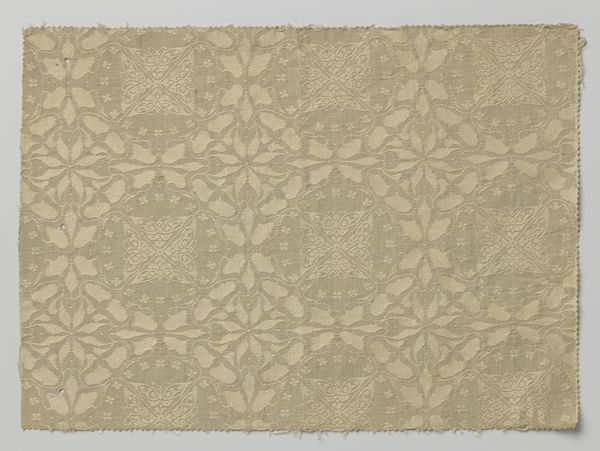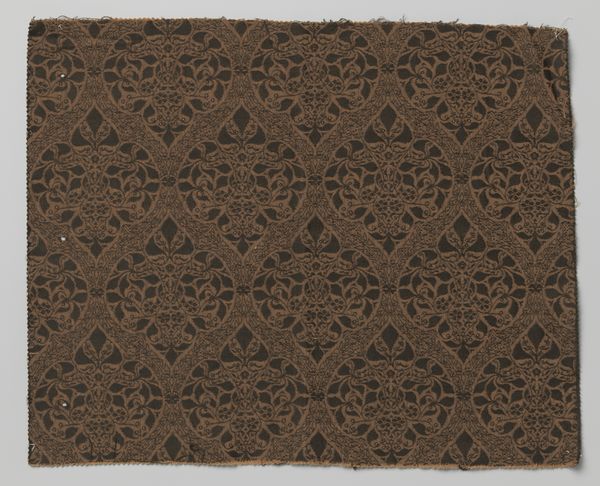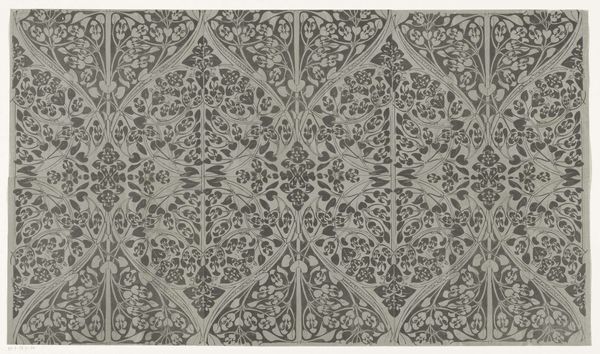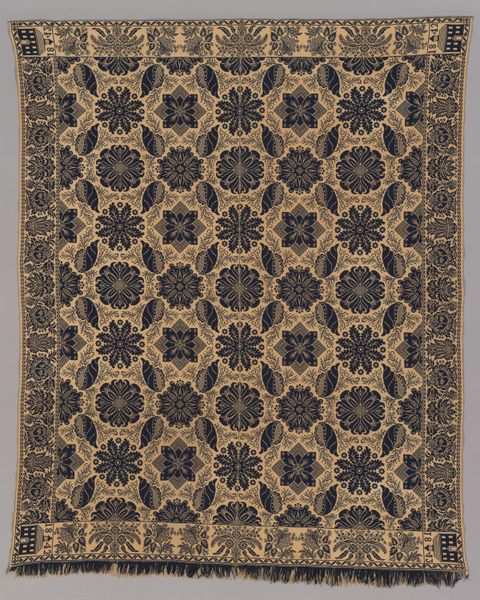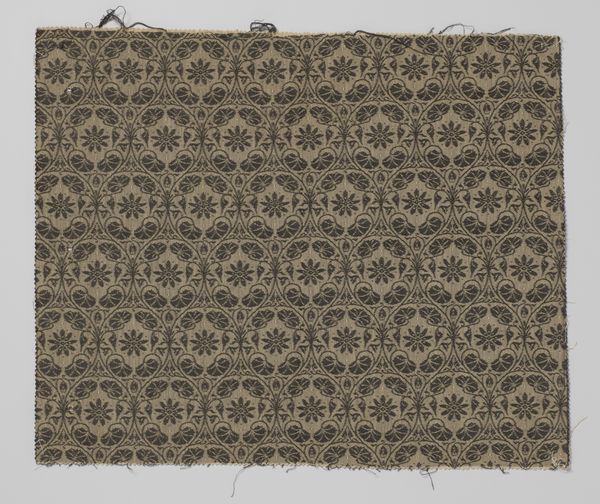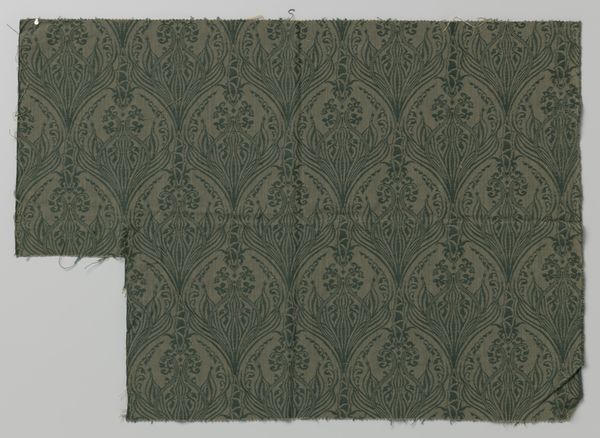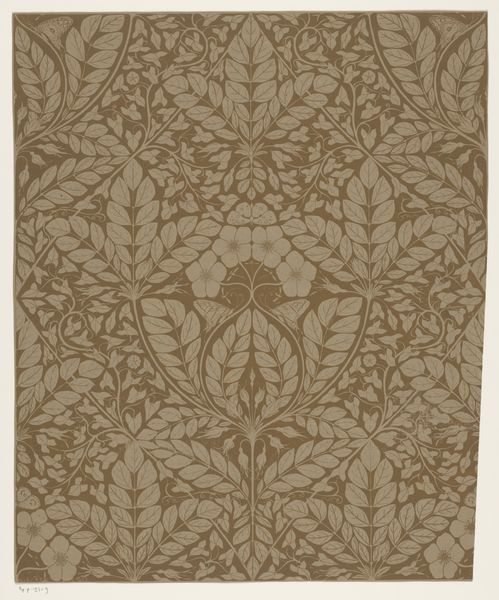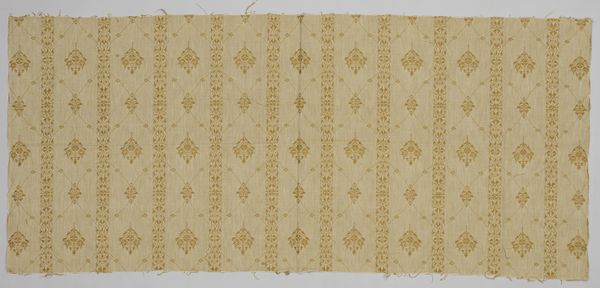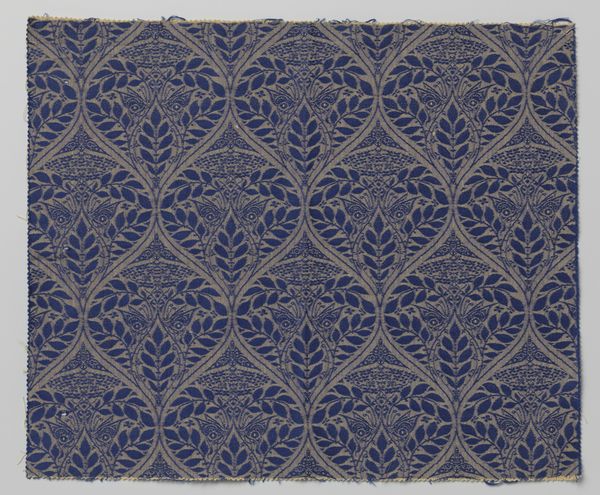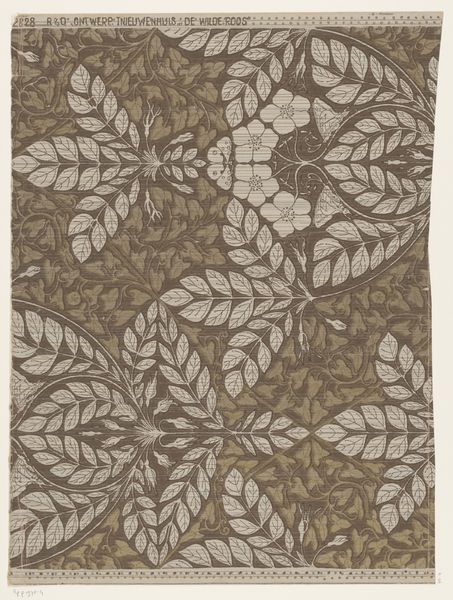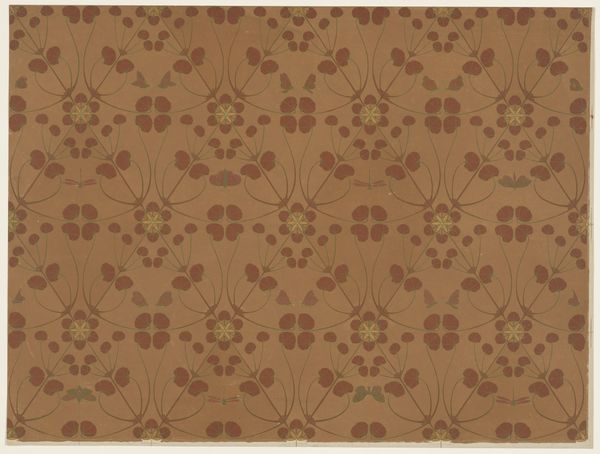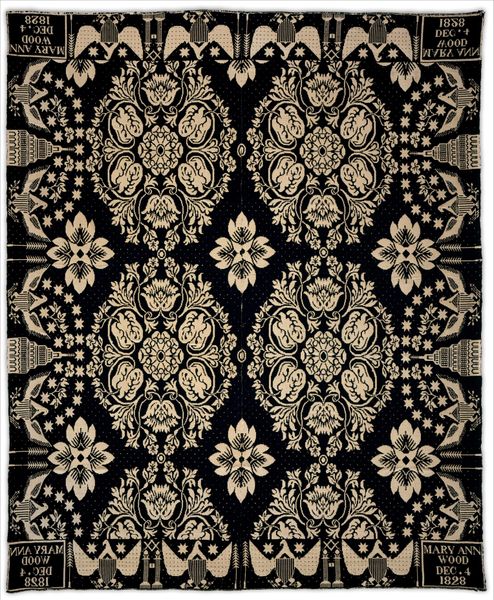
Fragment bespanningsstof met patroon van bloemen, bladeren en vlinders binnen spitsovale banden 1900 - 1925
0:00
0:00
fibre-art, weaving, textile
#
natural stone pattern
#
fibre-art
#
naturalistic pattern
#
arts-&-crafts-movement
#
weaving
#
repetition of white
#
textile
#
repetitive shape and pattern
#
ethnic pattern
#
repetition of pattern
#
regular pattern
#
pattern repetition
#
decorative-art
#
imprinted textile
#
layered pattern
Dimensions: length 38.5 cm, width 45.5 cm
Copyright: Rijks Museum: Open Domain
Editor: This is "Fragment bespanningsstof met patroon van bloemen, bladeren en vlinders binnen spitsovale banden," which translates roughly to "Fragment of upholstery fabric with pattern of flowers, leaves and butterflies inside pointed oval bands," made sometime between 1900 and 1925 by Theo Nieuwenhuis. It's currently held at the Rijksmuseum. The piece strikes me as particularly repetitive, yet the colours and motifs are very naturalistic. What do you see in this piece from a curatorial perspective? Curator: This textile fragment presents an excellent opportunity to explore the intersections of the Arts & Crafts movement, the conditions of its production and the material context in which it existed. Nieuwenhuis's design, weaving, emphasizes repetitive, almost mechanical reproduction of natural forms. We should examine how the choice of weaving impacted its social and economic accessibility, its intended use, and its lifespan. How does this compare with the mass produced textiles becoming popular around this time? Editor: So you’re thinking about this less as a standalone piece of art and more as an example of industrial processes and how the artist relates to that labour? Curator: Precisely! Consider how the design's symmetry and repetition would simplify the weaving process. Was this meant for an elite consumer, or a wider market? The chosen materials, the likely source of the dyes, and the location of its original manufacture all contribute to a much wider understanding. Even now we use textiles like this on our furniture without always thinking where the materials or design come from. Editor: That's a perspective shift for me, thinking about art more in terms of the work and social context behind its creation. Thanks for sharing this, I learned a lot! Curator: It has been a pleasure - by observing how textiles are crafted, circulated and consumed we will unveil hidden narratives, challenging traditional aesthetic values.
Comments
No comments
Be the first to comment and join the conversation on the ultimate creative platform.
